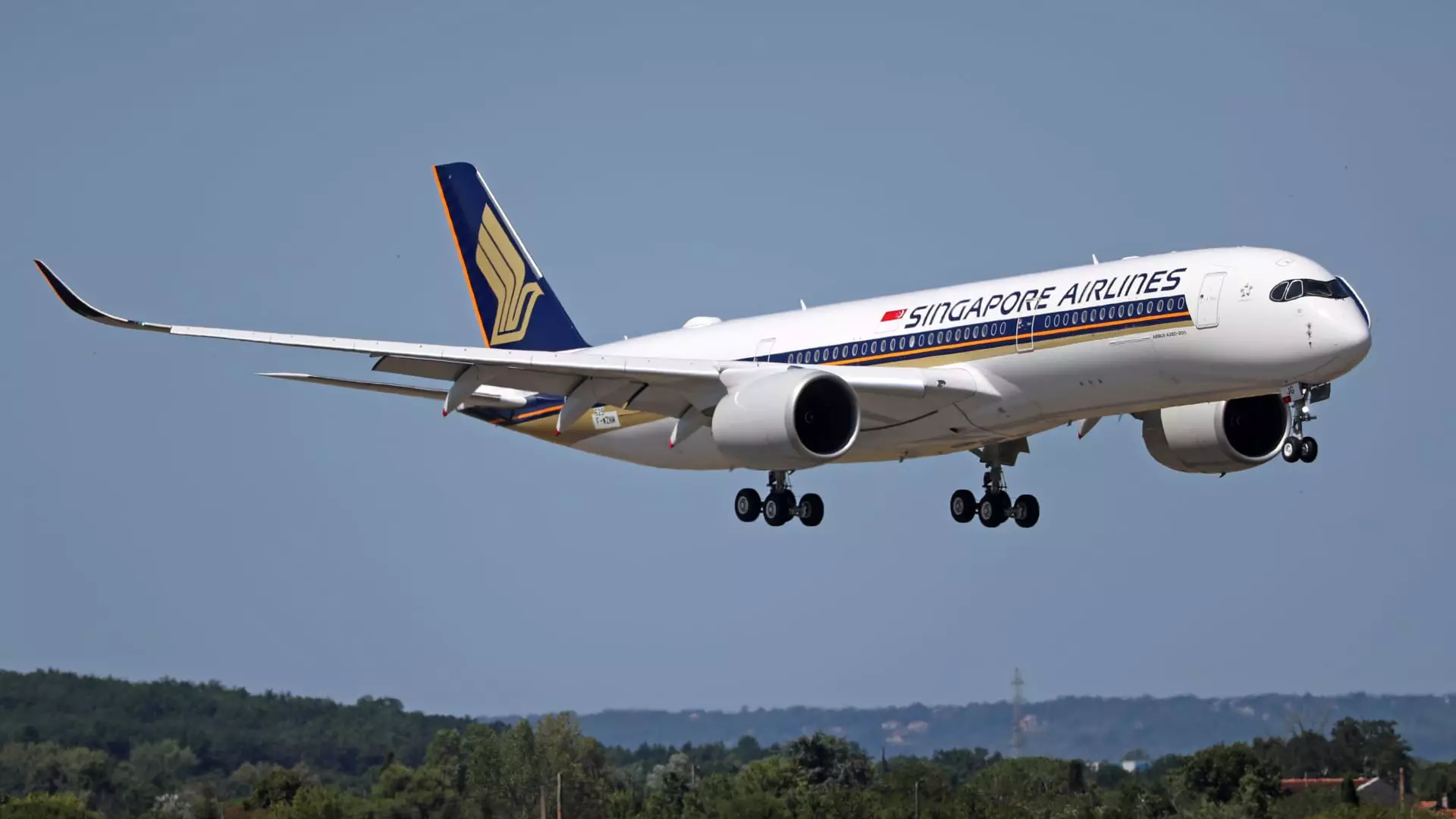In an era where travelers are increasingly seeking enhanced comfort and privacy, Singapore Airlines is taking significant strides to redefine the luxury travel landscape. The airline’s decision to introduce a four-seat first-class section on its Airbus A350-900 ultra-long-range aircraft marks a substantial investment in creating an exclusive flying experience. This aircraft, known for its capability to traverse long distances—some flights exceeding 17 hours—will serve as the modern canvas for Singapore Airlines’ commitment to luxury and passenger satisfaction.
The new first-class seating will be incorporated into seven selected Airbus A350-900s, which are primarily used for some of the airline’s longest routes, including the much-anticipated New York to Singapore journey. Such ambitious enhancements not only underscore the airline’s focus on high-spending customers but also aim to set new benchmarks in terms of comfort and luxury for long-haul flights.
To complement the new first-class seats, Singapore Airlines is revamping its entire cabin layout on long-haul aircraft. This overhaul will reportedly feature business class suites equipped with sliding doors—a design element that has emerged as a hallmark of privacy and exclusivity in premium air travel. Travelers today prioritize personal space and the ability to experience an oasis of solitude, particularly during extended flights. By integrating private suites, Singapore Airlines acknowledges this demand and places itself at the forefront of the evolving aviation industry.
While specifics regarding the new in-flight entertainment offerings remain sparse, CEO Goh Choon Phong has enthusiastically stated that the redesigned cabins will “push the boundaries of comfort, luxury, and modernity.” This echoes a broader trend within the airline sector where competitors, ranging from established international airlines to low-cost carriers, are investing heavily in cabin enhancements to attract affluent travelers seeking premium experiences.
The scale of Singapore Airlines’ cabin overhaul is monumental, encapsulated in the S$1.1 billion (approximately US$835 million) investment. This financial commitment reflects not only Singapore Airlines’ confidence in the rebound of luxury travel post-pandemic but also its intent to reclaim a leading position in the competitive airline market. Beginning mid-2026, this initiative will restart a fresh showcase of long-range Airbus A350s, which will include considerable updates to the existing configurations.
These updated long-haul aircraft will continue to feature business, premium economy, and standard economy classes. However, the introductions and modifications will adjust the seating proportions, with an increase in business-class seats from 67 to 70 and a notable reduction in premium economy from 94 to 58 seats. This change indicates a strategic focus on elevating the business class experience while still accommodating a diverse range of travelers.
Interestingly, the timing of Singapore Airlines’ first-class rollout contrasts sharply with trends observed among many U.S. carriers. Airlines across the United States are gradually phasing out their long-haul first-class offerings in favor of larger business class configurations. For instance, American Airlines is retrofitting its fleet to create a consolidated business-class experience that enhances comfort while optimizing cabin space.
However, not all carriers are abandoning first class. Lufthansa, a major German airline, is set to debut its latest first-class “suites” soon, showcasing a distinct approach to luxury that Singapore Airlines appears to embrace. This dichotomy in strategy reflects broader market dynamics, where airlines like Singapore continue to invest in premium privacy while others prioritize efficiency and capacity.
As travel expectations continue to evolve, Singapore Airlines is astutely positioning itself to cater to a clientele that craves exclusive experiences at 30,000 feet. By committing substantial resources to cabin enhancements that emphasize luxury and privacy, the airline not only reinforces its reputation for excellence but also sets a new bar for what passengers can expect from long-haul journeys. This bold vision ultimately aims to enrich the travel experience and may very well redefine the landscape of airline competition in the years to come.


Leave a Reply